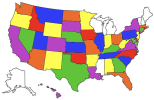FPK1
Line Up and Wait
Pilots in Houston collision acknowledged instructions to wait but took off anyways, NTSB says
Fortunately it was just barely thick enough…How thick is that block of swiss cheese.
Apparently they had more important things distracting them.Prelim reports that controller did indeed catch the errant jet as soon as it started moving and issued multiple orders to stop. So much for the cries of "this is a controller failure".
A different controller caught it. [Not commenting on responsibility.]Prelim reports that controller did indeed catch the errant jet as soon as it started moving and issued multiple orders to stop. So much for the cries of "this is a controller failure".
It seemed like they were behind the airplane before they even got to the runway.Apparently they had more important things distracting them.
"The flight crew from N269AA stated in their post-accident interview they had a rudder bias
alert, and a pitch trim alert which they had to resolve as they were in the takeoff roll."
That’s kinda typical when stuff like this happens. Based on how the captain was talking on the radio I bet the problems follow him around.It seemed like they were behind the airplane before they even got to the runway.
Apparently they had more important things distracting them.
"The flight crew from N269AA stated in their post-accident interview they had a rudder bias
alert, and a pitch trim alert which they had to resolve as they were in the takeoff roll."
We’re going on the information provided. Obviously no one would cry controller failure if the audio indicated a safety alert was given.Prelim reports that controller did indeed catch the errant jet as soon as it started moving and issued multiple orders to stop. So much for the cries of "this is a controller failure".
That would be the proper way to resolve those issues.Perhaps the real pilots do it differently but I was taught that when things aren't right on the take-off roll to immediately chop the power and abort the take-off ...
He didn't.Did the Tower give him the traffic of the plane landing on the intersecting when giving him LUAW? If not, the Controller gonna get a piece of the action here.
file:///C:/Users/bucko/Downloads/Report_DCA24FA017_193297_11_10_2023%209%2034%2012%20PM.pdf
Yep. That’ll be an issue.He didn't.
At 1518:01 the local controller instructed the crew of N269AA to LUAW on runway 22, to which
the crew acknowledged. The local controller did not give a traffic advisory to N269AA.
Is it typical for tower controllers to say something like ‘ line up and wait, traffic on short final on intersecting runway’? (I’m asking because I seldom fly to such airports.)Yep. That’ll be an issue.
Yes. It’s a rule of theirs. Look up to post # 26Is it typical for tower controllers to say something like ‘ line up and wait, traffic on short final on intersecting runway’? (I’m asking because I seldom fly to such airports.)
Yeah it’s a requirement for an aircraft that’s in a LUAW on an intersection g runway while another is landing.Is it typical for tower controllers to say something like ‘ line up and wait, traffic on short final on intersecting runway’? (I’m asking because I seldom fly to such airports.)
Juan doesn't think they have much of a case. The NTSB report has strong implications that both expectation bias (they say they heard a T/O clearance that didn't happen) plus likely FMS programming distractions, maybe including some that should have been resolved before beginning their T/O roll. It also might not be true they received no safety alert: apparently there were two calls to abort the take-off after they started. CVR analysis is pending and Browne expects it to put the crew in a deeper hole. We'll see, someday........ Still BS excuses but they have a case.

Juan actually made the comment that the traffic call wasn’t given for the crossing traffic. He the stated “typically” that is given. There is no typically involved here. This is the difference between a typical transmission and a required transmission. Also a “reason” for issuing a LUAW isn’t a requirement either. Saying something like “waiting for IFR release” is simply a technique. The requirement to issue intersecting traffic was intentionally put in the controllers manual 13 years ago because of runway incursions. It actually came in during “position and hold” days but I digress.Juan sure doesn't think they have much of a case. The NTSB report has strong implications that both expectation bias (they say they heard a T/O clearance that didn't happen) plus likely FMS programming distractions, maybe including some that should have been resolved before beginning their T/O roll. CVR analysis is pending and Browne expects it to put the crew in a deeper hole. We'll see, someday....
HHH
View attachment 122415
Yeah. If the required ‘traffic landing RW 13’ had been given, would it have broken through the fog in the cockpit? Would it have caught their attention and made them less likely to roll? We ain’t never going to know that. There seems to be some serious ADM and CRM issues here. But methinks the US Treasury is going to be writing a check on behalf of the FAA. Question is how many zeros are going to be on it.Juan actually made the comment that the traffic call wasn’t given for the crossing traffic. He the stated “typically” that is given. There is no typically involved here. This is the difference between a typical transmission and a required transmission. Also a “reason” for issuing a LUAW isn’t a requirement either. Saying something like “waiting for IFR release” is simply a technique. The requirement to issue intersecting traffic was intentionally put in the controllers manual 13 years ago because of runway incursions. It actually came in during “position and hold” days but I digress.
Not only did the pilots not know about the crossing traffic, but a safety alert wasn’t given prior to collision. A safety alert just isn’t something issued in the air. It’s anytime an aircraft is at an unsafe proximity to another aircraft. “Stop!” Is not a safety alert. It would be like trying to stop an aircraft who busted their altitude and is about to collide with another aircraft without explicitly informing them about the traffic. No traffic was given here.
Does any of this matter for who is responsible? No. As I stated, it’s a BS excuse because ultimately the pilots will be held responsible but you can bet improper phraseology will be addressed in the investigation.
It’s possible it would have gotten them talking about the traffic during the LUAW and prevented a take off. But once they were rolling “Hawker 9AA, traffic alert…” wouldn't have mattered. They were too distracted by then.Yeah. If the required ‘traffic landing RW 13’ had been given, would it have broken through the fog in the cockpit? Would it have caught their attention and made them less likely to roll? We ain’t never going to know that. There seems to be some serious ADM and CRM issues here. But methinks the US Treasury is going to be writing a check on behalf of the FAA. Question is how many zeros are going to be on it.

I don't know about that. I've always had mixed success getting FF at around 1,000' AGL. Seems like most of the time I get "too low for radar advisories" (I don't know if this would have been a factor in this location). As for see and avoid, this NTSB presentation says that it would have been difficult for either aircraft in this situation. I think that I would have a hard time seeing a 300kt aircraft 1,000' off the deck coming straight at me.Take the F-16 vs C150 Moncks Corner collision 8 years ago. I always believed the C150 pilot took just as much blame for the collision. They didn’t see and avoid in VMC and they didn’t contact ATC for FF. 99% chance the later would have prevented the collision. The controller issued a last minute traffic call, followed by a confusing safety alert but I don’t think she should’ve bore the brunt of the responsibility. But, that’s not what the courts thought.
Well I think that accident should’ve been distributed evenly on pilots and controller and not as in the lawsuit of DoD & FAA. Instead the NTSB put the primary blame on the controller. She could’ve planned a better deconfliction with the F-16 but that’s a difficult task when dealing with a 1200 code when you don’t know their intentions. She made an effort to deconflict, just wasn’t in a timely manner.I don't know about that. I've always had mixed success getting FF at around 1,000' AGL. Seems like most of the time I get "too low for radar advisories" (I don't know if this would have been a factor in this location). As for see and avoid, this NTSB presentation says that it would have been difficult for either aircraft in this situation. I think that I would have a hard time seeing a 300kt aircraft 1,000' off the deck coming straight at me.
And while I understand that there are a bunch of specific terms and words that we use in the flying world, "immediate" seems pretty clear to me. I was on a VFR flight from the Chicago area to Omaha with FF once and got a "turn right" call. I'm not sure now if it was followed by a "now" or "immediate" but I did what was asked and saw another airplane go by south to north. They were a little lower and I don't think there would have been a collision but between the urgency in their voice and the "now" or "immediately" at the end of the command, I turned that 182 HARD.
I think this particuar accident had a bunch of unfortunate coincidences that just lined up to create the result. Controller using different phraseology, F-16 pilot turning off the AP and making a harder turn, 152 pilot looking in the right place at the right time, could have made a difference.
BWTHDIK?
Some pockets are deeper than others. It is a shame sometimes when blame has to be established to an employee of said deep pocket to gain access to the pocketIt’s possible it would have gotten them talking about the traffic during the LUAW and prevented a take off. But once they were rolling “Hawker 9AA, traffic alert…” wouldn't have mattered. They were too distracted by then.
It’s strange where blame is placed sometimes. Take the F-16 vs C150 Moncks Corner collision 8 years ago. I always believed the C150 pilot took just as much blame for the collision. They didn’t see and avoid in VMC and they didn’t contact ATC for FF. 99% chance the later would have prevented the collision. The controller issued a last minute traffic call, followed by a confusing safety alert but I don’t think she should’ve bore the brunt of the responsibility. But, that’s not what the courts thought.

Family of father, son killed in Moncks Corner Cessna – F-16 mid-air plane collision to receive $6.8 million
A settlement has been reached after an F16 crash in Moncks Corner. Learn more about the incident here.www.motleyrice.com

Nope. Nope Nope and nope.Ground watches the taxiways. Tower watches the runways. The sup watches personnel not aircraft. The guy working CD isn't watching anything but the strip printer. Have you ever been in a control tower?
Nope. Nope Nope and nope.
Something bad happens and we’re ALL peeing in a cup. CTO, and CTO examiner cards in my wallet.
In my case the airport STOLE a gallon of fuel from my airplane without authorization. Your insurance policy with the oil company doesn't override my (and the FEDERAL) interests.I never considered this aspect of ATC before. Sorta awful, but I understand it. :/
We used to "set aside" a gallon of 100LL every time a plane crashed that might have bought fuel from us. The idea being to have it ready for testing when the inevitable plaintiff's lawsuit looked around for pockets to sue. Our 100MM policy from Chevron was attractive. It kept the maintenance goons in a steady supply of solvent though
Yes, sorry. I thought i conceded this back two pages ago when Velocity called me out. I hearby retract. (And it was the cd guy or someone who caught the issue as well).Nope. Nope Nope and nope.
Something bad happens and we’re ALL peeing in a cup. CTO, and CTO examiner cards in my wallet.
In my case the airport STOLE a gallon of fuel from my airplane without authorization. Your insurance policy with the oil company doesn't override my (and the FEDERAL) interests.
This actual link seems like both aircraft were operating as Part 91?i truly believe this highlights the “must go and not P.O. the exec” mentality of 135 flying. I’ve lived it. The pressure is there. In the 121 world I cannot imagine this happening (troubleshooting during takeoff roll).
Of course, anything is possible.
Even worse. The guy in the back can actually fire the pilot.This actual link seems like both aircraft were operating as Part 91?
Or 135. Either way there is pressure.This actual link seems like both aircraft were operating as Part 91?
Yup. That’s true, and an influencer for decision making. Obviously it shouldn’t be, but it is.Even worse. The guy in the back can actually fire the pilot.
Even worse. The guy in the back can actually fire the pilot.
I do not miss 91 flying.Agee decided to fire the company's chief pilot, a 40-year veteran, during a flight to Boise from the East Coast. He called Pat Moore, then the assistant pilot, to the back of the plane. Recalls Moore: "He said he didn't like the chief pilot and asked me if we should fire him right then or wait until we were on the ground. I couldn't believe it. I told him to at least wait until we landed."
https://money.cnn.com/magazines/fortune/fortune_archive/1995/05/29/203144/
